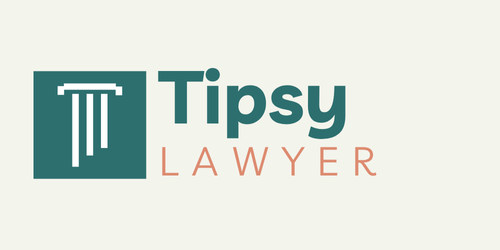Time management is a critical skill that significantly influences both personal and professional aspects of life. It encompasses the ability to plan and regulate time allocation for various activities, enhancing efficiency and effectiveness. Effective time management reduces stress levels, boosts productivity, and promotes a healthier work-life balance.
A primary advantage of time management is the ability to prioritize tasks, focusing on the most crucial ones. This approach helps prevent feelings of being overwhelmed and ensures steady progress towards set objectives. Furthermore, proper time management aids in combating procrastination, a common hindrance to success.
By allocating time judiciously, individuals can maximize daily productivity and accomplish more within shorter periods. In the contemporary fast-paced environment, time management has become increasingly vital. The multitude of demands on one’s time can often lead to a sense of constantly lagging behind.
However, mastering time management techniques allows individuals to gain control over their schedules and optimize each day. This mastery can result in enhanced job satisfaction, improved performance, and a stronger sense of achievement.
Key Takeaways
- Effective time management is crucial for achieving success in both personal and professional life.
- Setting clear and achievable goals helps in staying focused and motivated.
- Prioritizing tasks and activities ensures that the most important things get done first.
- Utilizing time management tools and techniques such as calendars, to-do lists, and time tracking apps can greatly improve productivity.
- Avoiding procrastination is key to staying on track and meeting deadlines.
- Setting boundaries and learning to say no to unnecessary commitments can help in managing time effectively.
- Regularly evaluating and adjusting time management strategies is essential for continuous improvement and efficiency.
Setting Clear and Achievable Goals
Staying Focused and Motivated
This can help to keep us focused and motivated, as we have a clear target to work towards. In addition to setting clear goals, it’s important to break them down into smaller, manageable tasks. This can make our goals feel more achievable and can help us to stay on track.
Breaking Down Goals into Smaller Steps
By breaking our goals down into smaller steps, we can also make better use of our time, as we can focus on completing one task at a time.
Regularly Reviewing and Adjusting Goals
Furthermore, it’s important to regularly review and adjust our goals as needed. As we progress towards our goals, we may find that our priorities change or that new opportunities arise. By regularly reviewing our goals, we can ensure that they remain relevant and achievable. This can help us to stay focused and motivated, as we are constantly working towards goals that are meaningful and attainable.
Prioritizing Tasks and Activities
Prioritizing tasks and activities is a key aspect of effective time management. By prioritizing our tasks, we can ensure that we are focusing on the most important and urgent ones first. This can help us to make the most of our time and avoid feeling overwhelmed by a long to-do list.
One way to prioritize tasks is to use a system such as the Eisenhower Matrix, which categorizes tasks based on their urgency and importance. This can help us to quickly identify which tasks require immediate attention and which ones can be tackled later. By using this system, we can ensure that we are focusing on the tasks that will have the greatest impact on our goals.
Another important aspect of prioritizing tasks is the ability to delegate when necessary. Not all tasks need to be completed by us personally, and by delegating tasks to others, we can free up more time to focus on the tasks that require our specific skills and expertise. Delegating tasks can also help to build trust and collaboration within a team, leading to greater efficiency and productivity.
Utilizing Time Management Tools and Techniques
| Time Management Tools and Techniques | Metrics |
|---|---|
| Task Prioritization | Number of tasks prioritized daily |
| Calendar Blocking | Percentage of time blocked for focused work |
| To-Do Lists | Number of completed tasks from the list |
| Time Tracking | Hours spent on different activities |
| Goal Setting | Achievement of set goals within a timeframe |
There are a variety of time management tools and techniques that can help us to better manage our time. One popular tool is the use of a calendar or planner to schedule our tasks and activities. By using a calendar, we can visualize our schedule and ensure that we are allocating our time effectively.
This can help us to avoid overbooking ourselves and ensure that we have enough time for both work and personal activities. Another useful time management technique is the practice of setting deadlines for ourselves. By setting deadlines, we can create a sense of urgency and motivation to complete our tasks in a timely manner.
This can help us to avoid procrastination and ensure that we are making progress towards our goals. Additionally, the use of technology can be a valuable time management tool. There are many apps and software programs available that can help us to track our time, set reminders, and stay organized.
By utilizing these tools, we can streamline our workflow and make the most of our time.
Avoiding Procrastination
Procrastination is a common obstacle to effective time management, but there are strategies that can help us to avoid it. One effective strategy is the practice of breaking tasks down into smaller, more manageable steps. By doing this, we can make tasks feel less overwhelming and reduce the likelihood of procrastinating.
Another helpful strategy is the use of time blocking, which involves setting aside specific blocks of time for focused work. By dedicating specific time slots to certain tasks, we can create a sense of structure and accountability, making it less likely that we will procrastinate. Furthermore, it’s important to identify any underlying reasons for procrastination, such as fear of failure or perfectionism.
By addressing these underlying issues, we can develop healthier habits and reduce the tendency to procrastinate.
Setting Boundaries and Saying No
Protecting Time and Energy
This may involve setting limits on how much time we spend on certain activities or learning to say no to requests that don’t align with our priorities.
The Importance of Saying No
Learning to say no can be challenging, but it’s an important skill for maintaining a healthy work-life balance. By saying no to activities or requests that don’t align with our goals or values, we can free up more time for the things that truly matter to us.
Avoiding Burnout and Maintaining Well-being
Additionally, setting boundaries can help us to avoid burnout and maintain our overall well-being. By protecting our time and energy, we can ensure that we have enough resources to devote to the things that are most important to us.
Evaluating and Adjusting Your Time Management Strategies
Finally, it’s important to regularly evaluate and adjust our time management strategies as needed. As we progress towards our goals and face new challenges, it’s important to be flexible and willing to make changes to our approach. One way to evaluate our time management strategies is to regularly review our progress towards our goals.
Are we making the progress we had hoped for? Are there any obstacles or challenges that are preventing us from using our time effectively? By asking these questions, we can identify areas for improvement and make adjustments as needed.
Additionally, seeking feedback from others can be a valuable way to evaluate our time management strategies. By asking for input from colleagues or mentors, we can gain new perspectives and identify blind spots that may be impacting our ability to manage our time effectively. In conclusion, effective time management is a crucial skill that can greatly impact our personal and professional lives.
By understanding the importance of time management, setting clear goals, prioritizing tasks, utilizing tools and techniques, avoiding procrastination, setting boundaries, and regularly evaluating our strategies, we can make the most of each day and achieve greater success in all areas of our lives.
If you’re interested in learning more about copyright law and its impact on family matters, check out this article on TipsyLawyer.com. It provides valuable insights into how copyright can affect issues such as child custody, divorce, and estate planning within a family context. Understanding copyright law in the family setting is crucial for protecting intellectual property and ensuring fair distribution of assets.
FAQs
What is copyright?
Copyright is a legal right that grants the creator of an original work exclusive rights to its use and distribution, usually for a limited time, with the intention of enabling the creator to receive compensation for their intellectual effort.
What does copyright protect?
Copyright protects original works of authorship, including literary, dramatic, musical, and artistic works, such as poetry, novels, movies, songs, computer software, and architecture.
How long does copyright protection last?
The duration of copyright protection varies depending on the type of work and the country, but in general, it lasts for the life of the author plus 70 years.
Do I need to register for copyright protection?
In most countries, including the United States, copyright protection is automatic as soon as the work is created and fixed in a tangible form. However, registration with a copyright office can provide additional benefits, such as the ability to sue for statutory damages and attorney’s fees in case of infringement.
What rights does a copyright owner have?
A copyright owner has the exclusive rights to reproduce the work, prepare derivative works based on the original, distribute copies to the public, and perform or display the work publicly.
What is considered fair use of copyrighted material?
Fair use is a legal doctrine that allows limited use of copyrighted material without permission from the copyright owner for purposes such as criticism, comment, news reporting, teaching, scholarship, and research. The determination of fair use is based on four factors: the purpose and character of the use, the nature of the copyrighted work, the amount and substantiality of the portion used, and the effect of the use upon the potential market for or value of the copyrighted work.















